Latest
Ask Willis
Hey Alex,
I think you would notice an improvement with the difference being the 085, 105 and for me I use the 135 b-string.
It’s a common misconception that smaller strings will improve the action and playability of a bass.
Here’s what happens:
There’s less tension on smaller strings. Since they are looser, they vibrate in a wider path.
Because their vibration path is wider, it’s necessary to raise the strings to prevent buzzing.
Raise the strings and they’re farther away from the pickup and have less output. Which means,
you have a tendency to play them harder to get more sound – which, in turn, makes them buzz, etc.
A bigger string has more tension and and allows you to actually have lower action because
it’s vibration path is smaller and is less likely to buzz. The bigger string is more for the pickup to “see”
so you have more output – plus it’s closer to the pickup for more output as well.
At a certain point, more tension prevents a fretless note from attaining that characteristic fretless “buzz”,
since it’s not allowed to “breathe”. So I find the 045, 056, 085, 105, 135 balances all these factors.
I’ll generally change strings after about 3 concerts – 6 hours of playing.
—-
Hey Willis,
I wanted to ask how you cleanly articulate some of the fast low notes in your solos.
I’ve tried to play fast passages the B string and I noticed it gets really muddy.
Does that have to do with your right hand technique?
Also, do you like to add reverb to your bass when playing expressive melodies like a ballad?
If so, what type of reverb to you go for?
Thanks,
Aaron
Hey Aaron,
There’s a lot of elements that go into getting a good, articulate sound out of the B string.
Let’s start with the b-string itself. The D’Addario .135 I use is a little bigger than most but check the above
answer for the effect size and tension plays in getting tone.
Next, one of the unique aspects of my signature bass is that the string to string balance is weighted
towards the b-string. Its magnet is closest to the surface of the pickup so it’s the loudest string.
This allows my right hand to not have to compensate to get notes on the B-string to speak.
The headstock on my bass is configured 2+3. This allows us to move the tuners another 3/4″ away
from the nut, resulting in a longer string and load-bearing tension.
Finally, the body is a bolt-on, light Japanese Ash which reenforces low frequencies but still has the
right balance of grain properties that don’t make it “mushy”.
Of course, you still need technique, but having all these advantages doesn’t hurt.
Depending on the amount of sonic space available – I usually start with some kind of clean sounding Plate reverb,
about 2 – 2.5 seconds, no early reflections and full diffusion. The real key is to EQ the reverb itself. The low frequencies
can quickly become muddy. I use a high-pass filter at around 450hz to make sure the lowest notes don’t go rumbling around.
—-
Hey Willis,
Did you attend Northern Arizona University
thanks,
Kevin
Hey Kevin,
You mean the Fightin’ Lumberjacks? High altitude Flagstaff, Saturday afternoons at the Walkup Sydome?
Nah, I went to North Texas State University.
—-
Hey Willis
I’ve been watching videos over and over and I can not slap correctly, read through your Ask Willis database but to no avail. Every time I slap I get a clank sound instead of the the sound I was aiming for. What can I be doing wrong?
Hey Johnny,
You’re about 20+ years too late 😉
My slapping ability reached its peak around 1985 and quickly died once I started writing my own music.
Anyway, I can only guess that it could be a setup problem with your bass. Most (fretted) basses, if they’re reasonably set up will produce a decent slap sound – and at least give you something to start with. Try out some friends’ basses or even some in a music store.
There’s plenty of slap instruction floating around the interwebs – make sure to eliminate the instrument as the problem first.
—-
Hey Willis!
I went to gig that you played several years ago. During the gig the drummer was sometimes screwing up the time a little. And I think at a certain point you got tired of that and decided to start playing “your own” time. Man it was so rock solid that you could hear that every note that wouldn’t be played with you would be wrong. Now my question is could you tell how you’ve developed this amazing sense of time and do you maybe have some exercises to develop this? Thanks in advance for your time.
Greetings,
RB
Hey Roald,
Hmmmmmm, I guess I wasn’t very discreet with my attitude that nite 😉
I would say that I got the most improvement in my sense of time by working with the minimum necessary.
A long time ago, I discovered that the “hearbeat” of a drummer was his hi-hat. Kick drums, snares, accents,
crashes – etc; all of those can and should be unpredictable but what always remains constant is the hi-hat.
The other thing is that the hi-hat is most audible in between the beats – even if it’s always playing you pretty much
only hear it in between bass drums and snares, etc. In the context of the drum kit – it’s also kind of soft.
So I recommend trying to imitate that experience when you practice. Program a drum machine to only play hi-hat –
but only put it on the “ands” (the 2nd of every eight note pair). And also turn the volume down. As well as being more
realistic, this gives you the responsibility to provide the downbeats and back beats while still listening in between for how to adjust (if necessary).
Nowadays it’s possible to practice almost any kind of feel with an audio or midi of a full-on, perfectly mixed
drum groove. But then you become dependent on a perfectly mixed, perfectly played groove for your sense of time and feel.
By eliminating all but what’s necessary, you can develop a sense of time that other musicians can rely on.
—-
Hey Willis!
Just a quick note to say thanks very much for all your time replying to our questions!
I’m getting on really well now with the Ultimate Ear Training!! Thanks for writing that one!
I know you like the GS112 cabs, in fact, I have the very two you played at the Mansons clinic in Exeter where we met a couple of years ago.
BUT I am struggling for volume! Do you insist on me getting a 3rd 112 or have you tried the GS410 and don’t like it?
Should I go for the GS410 or should I get that 3rd GS112??
My Eden wt550 WILL run a 2ohm load, but I always thought the more separate cabs you have, the tone quality drops with all the connections involved.
All the best,
Rob
Hey Rob,
Thanks for the email and great to hear about your progress.
The tone quality drop you’re concerned about doesn’t come from the additional connections but in how
hard you make the amp work. Even if it’s only one cabinet, if an amp is working close to the limit of it’s abilities,
the tone and responsiveness will suffer.
Since that 300 watt WT can handle it, I would definitely try a 3rd GS112.
The 3rd cab will be closer to your torso so even if the system is only a little louder, you’ll perceive more volume.
Also, you could try putting a couple of 1/2 wood strips between the GS112’s and turning them on their sides.
This will get them even higher and could help focus the sound where you want to hear and feel it.
When I use only two GS112’s with my DB750 – it’s fine for most of the night but still there are some moments
where that 3rd cabinet make all the difference.
The problem with adding a 410 is that once you start mixing cabinets, then you run into differences in efficiency and unless you have a separate amp for each cabinet, getting the right balance between them will be extremely difficult.
—-
Hey Willis,
I have a question about my righthand technique which I could not extract completely from your video and U-tube clinics etc. I play with two fingers and the question is: If play an eight note bebop line over 2,3,4 or even over 5 strings, does the right hand fingering change each time you change to another string when the line is descending? For example somewhere on the G string to a place on the low B string? In other words do you rake always when you play a descending line in whatever kind style, groove and line etc? Also, if you play ascending, do you start with different fingers (from a two finger players perspective). I mean do you play an ascending line starting with the first finger but also with the second? In other words, is it the way you play descending the reason to play ascending, starting with the first or second finger of the right hand?
Thanks and greetings from Rik
Hey Rik,
For descending, yes, it’s always raking with the first finger to cross strings descending.
For ascending (crossing strings going up) I always play the first note on the new string with the 3rd finger.
I never “cross up” my fingers. In order to take advantage of the 3rd finger, it’s always is resting on next string up and is ready to go.
My descending technique is no different than anyone else’s. The hardest thing to do on bass is to cross strings going up. That’s what the 3rd finger takes care of for me.
—-
Hey Willis,
Been a fan for many moons. I recently purchased a GWB35 and I love it. I put in a Bartolini preamp and that made a big difference. Unfortunately, I cannot afford the Bad Boy (GW1005). I have a small problem with the fretlines. When I got the bass, they were sticking out a bit just like microfrets. I had a very good luthier smooth them out and it was fine. Now I have the odd one creeping up again. Have you come across this and what can I do about it if this is recurring?
Kindest of regards,
Marco
Hey Marco,
Sorry to hear about the fret lines not staying put. I haven’t seen this problem on the GWB35 or the GWB1005.
I’d try just a tiny amount of super-glue to hold them down.
If any of it spills onto the fingerboard – use some fine sandpaper (500+ grit) to even it out.
After that, you can get the glossy look back with some 00 grade steel wool.
—-
Hey willis,
Can you explain a little bit more about strong beat-weak beat concept..especially in 16ths?
Thanks,
Reno
Hey Reno,
The strong-weak beat thing comes from choosing notes in a line that will create harmony.
In any duple or binary note pattern (half notes, quarter notes, eights, 16ths etc) the first note should be a note from the harmony while the 2nd functions differently depending on what kind of line you want to produce. It’s possible to only move in half steps or whole steps from one note to the next while still satisfying the harmony in this manner. This produces very smooth lines and can work in soloing, walking, grooving or playing a fill. A very basic example of quarter notes you can try is here:
http://garywillis.com/pages/lessons/fbh.html
Gear News
Gear News: Positive Grid Launches Spark 2
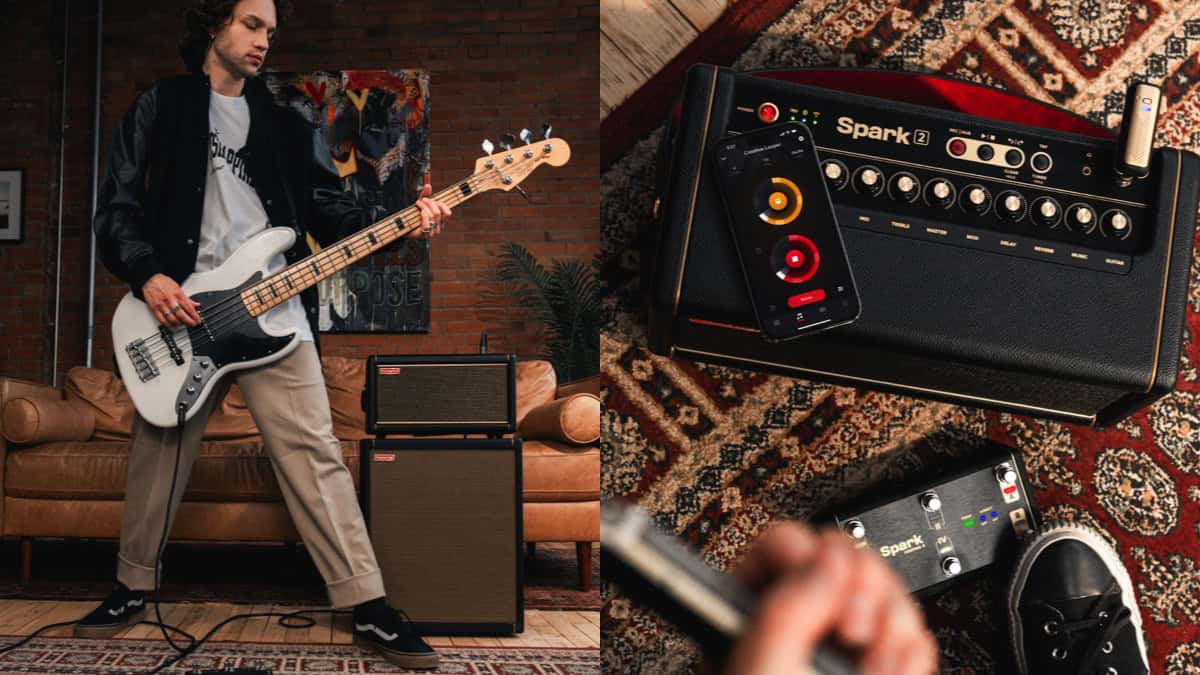
Positive Grid launches Spark 2, the next evolution of their cutting-edge smart guitar practice amplifiers and Bluetooth® speakers.
Engineered for acoustic, electric guitar, and bass, Spark 2 delivers an immersive practice and playing experience. Enjoy detailed sound and an all-new upgraded speaker design powered by Positive Grid’s exclusive Sonic IQ Computational Audio technology. With an onboard creative looper, optional battery power, and intuitive AI features for tone exploration and practice, Spark 2 is the gateway to a musical experience that goes beyond expectations.
Proprietary Audio and Advanced Technology
Spark 2 represents a leap forward in amplifier design. It integrates a new DSP amp modeling engine with double the processing power, and at 50 Watts, it packs 25% more volume than the original. Positive Grid’s proprietary Sonic IQ Computational Audio delivers incredibly detailed and dynamic sound. New HD amp models, enhanced by multi-band dynamic range compression and virtual bass augmentation, redefine the sonic landscape.
Equipped with two premium FRFR speakers and reflex ports, Spark 2 offers wide stereo imaging and broader frequency response, ensuring refined bass and clear, immersive sound.
Built-In Creative Looper
Spark 2’s built-in Groove Looper features hundreds of hyper-realistic drum tracks. From basic loops to multi-layered soundscapes or the ultimate jam session, this intuitive tool inspires endless creativity. Onboard amp controls provide quick, on-the-go looping functionality.
AI-Powered Tone and Smart Jam
Spark AI revolutionizes tone exploration. Describe any desired tone in the Spark app – from practical to outlandish – and Spark AI will suggest tones to audition or download. The more it’s used, the smarter it gets, delivering the perfect sound.
Additional smart features make it easy to practice, learn new songs and improve playing skills. Smart Jam listens to the user’s playing style and generates accompanying bass and drum parts, while Auto Chords analyzes any song streamed and displays the guitar chords in real time, to make learning and practicing new songs easier than ever.
Enhanced Hardware Design and Portability
Spark 2 allows for storing up to eight customizable presets directly on the amp for quick access to favorite sounds. Perfect the tone with large, visible onboard controls for looper, EQ, gain, reverb, and more.
Designed for convenience, an optional rechargeable battery provides up to 12 hours of playtime for on-the-go sessions. The new double-thick strap and durable build ensure easy and secure transport. Spark 2 is also Bluetooth® ready, allowing for music streaming and jamming along with favorite tracks anytime, anywhere.
Multiple Outputs and Advanced Features
Spark 2 offers versatile connectivity with a headphone out for private practice, stereo line outs for external audio sources, and a USB-C port which enables it to function as an audio interface. WiFi-enabled, Spark 2 allows convenient over-the-air firmware updates, keeping the amp up to date with the latest features and improvements.
“I’ve used a ton of practice amps while touring the world for over 38 years and it was always just a technical, bland exercise,” says guitar virtuoso, singer-songwriter and producer Nuno Bettencourt. “Spark 2 is like taking Madison Square Garden wherever you go – epic and versatile.”
Color Options
Available in Pearl or Black finish with a dark weave grille and premium finish.
Special Event, Upgrade Pricing & Availability
Join the special live premiere event featuring Nuno Bettencourt and surprise guests on August 1, 2024, at 8:00 am PT/11:00 am ET. Visit positivegrid.com/pages/livestream for more details and to sign up for a reminder.
Regularly USD $299, Spark 2 will be available at special early bird pricing during the pre-order period. Registered Spark 40 owners can also receive exclusive upgrade pricing.
For more information and to sign up for pre-order alerts, visit positivegrid.com/products/spark-2.
Gear Reviews
Gear Review: Exploring the Joyo Gloam – Sub Octave Fuzz Pedal for Bass
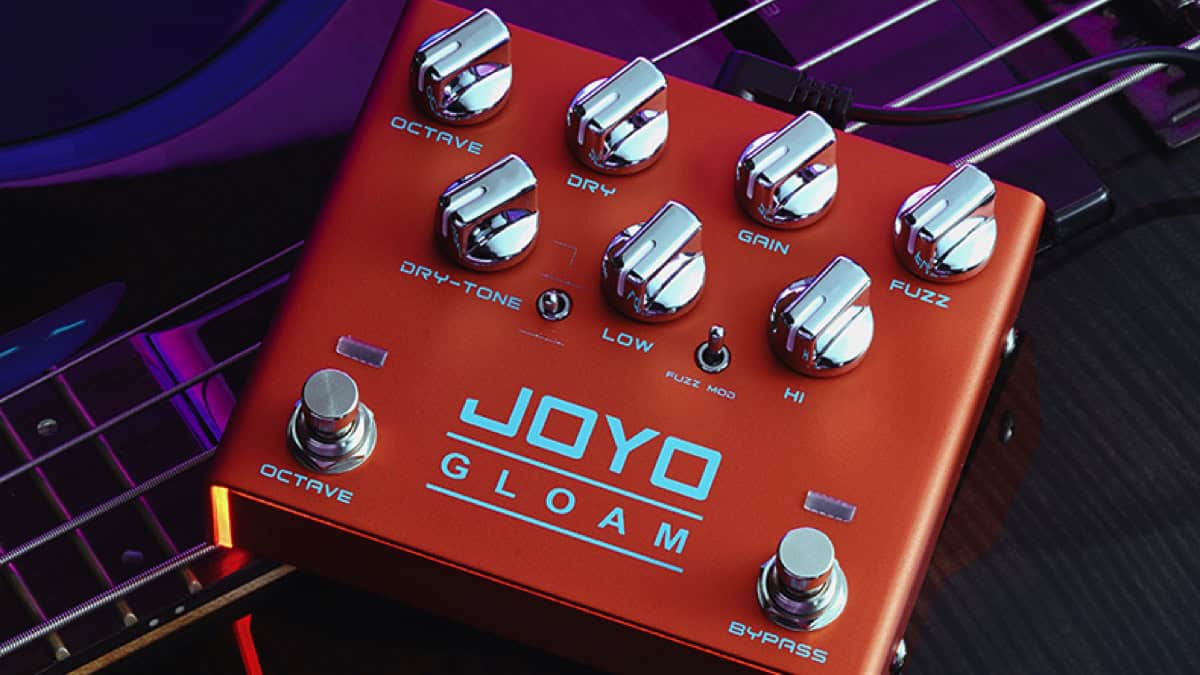
A review of the Joyo Gloam – Sub Octave Fuzz Pedal for Bass
Disclaimer: This pedal was kindly provided by Joyo for the purpose of this review. However, this does not influence our opinions or the content of our reviews. We strive to provide honest, unbiased, and accurate assessments to ensure that our readers receive truthful and helpful information.
Introduction: The Joyo Gloam is a sub-octave fuzz pedal specifically designed for bass players, combining modern sub-octave effects with rich fuzz tones. With two independently controlled circuits, the Gloam aims to provide a versatile range of sounds, from deep, aggressive fuzz to Moog-like synth effects. This review will explore the Gloam’s specifications, controls, and overall performance, highlighting both its strengths and areas for improvement.
Specifications:
- Dimensions: 130 * 110 * 50 mm
- Weight: 403g
- Working Voltage: DC 9V
- Controls: The Joyo Gloam features a comprehensive control set designed to provide bassists with a wide range of tonal options:
- Dry Tone: Adjusts the tone of the clean signal.
- Dry Volume: Controls the volume of the clean signal.
- Sub Octave Volume: Adjusts the volume of the sub octave signal.
- Gain: Controls the amount of gain in the fuzz circuit.
- Fuzz: Adjusts the intensity of the fuzz effect.
- Bass: Controls the bass frequencies in the fuzz circuit.
- Treble: Adjusts the treble frequencies in the fuzz circuit.
- Fuzz Mode Switch: Switches between two different fuzz modes.
- Dry Tone Frequency Switch: Selects between two different frequency points for the dry tone.
Performance: The Joyo Gloam excels in its dual-circuit design, offering both a sub octave and a fuzz channel that can be controlled individually. However, it’s important to note that the octaver cannot be used without the fuzz circuit activated; the only way to solo the octaver is by turning down the fuzz while both channels are engaged.
Fuzz Circuit: The fuzz circuit includes standard controls such as gain, volume, bass, and treble, along with a fuzz mode switch that toggles between two distinct fuzz modes. While one of the fuzz modes is highly usable and delivers a rich, aggressive tone, the other mode falls short and is less practical for most applications.
Octaver Circuit: The octaver circuit features controls for sub octave volume, clean volume, and clean tone, along with a dry tone frequency switch that provides two different frequency options. This allows for significant tonal versatility, enabling bassists to fine-tune their sound to match their preferences. Despite its limitation of being tied to the fuzz circuit, the octaver produces a deep, balanced sound that stands out.
Combined Effect: When used together, the fuzz and octaver circuits create a wide range of sounds, from classic, aggressive fuzz to synth-like tones reminiscent of a Moog synthesizer. This combination makes the Gloam a powerful tool for bassists seeking to experiment with their sound and achieve unique, textured tones.
Pros:
- Versatile Controls: Extensive control options for both fuzz and octaver circuits.
- Rich Tones: Delivers deep, aggressive fuzz and balanced octaver sounds.
- Sturdy Construction: Durable build quality ensures reliability.
- Wide Range of Sounds: Capable of producing everything from classic fuzz to synth-like effects.
Cons:
- Unusable Fuzz Mode: One of the fuzz modes is less practical.
- Dependent Octaver: Octaver cannot be used independently of the fuzz circuit.
Conclusion: In conclusion, the Joyo Gloam sub-octave fuzz pedal offers a versatile and powerful option for bassists looking to expand their tonal palette. Despite some flaws, the Gloam delivers impressive sounds and flexibility. Its combination of rich fuzz and deep octaver tones, coupled with a sturdy construction, makes it a valuable addition to any bassist’s pedalboard. For those seeking a modern bass distortion with the added depth of sub-octave effects, the Joyo Gloam is a compelling choice for a very compelling price.
Visit online at joyoaudio.com/product/281.html
Latest
July 22 Edition – This Week’s Top 10 Basses on Instagram
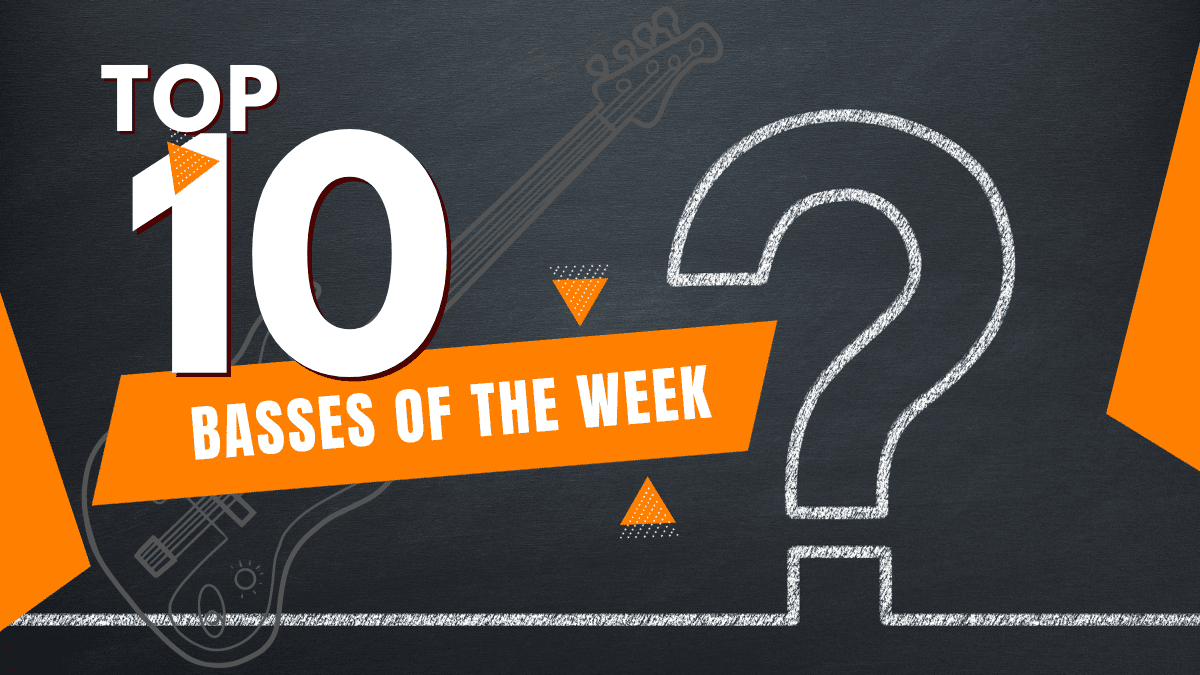
Check out our top 10 favorite basses on Instagram this week…
Click to follow Bass Musician on Instagram @bassmusicianmag
FEATURED @jermsbass @ramabass.ok @adamovicbasses @mgbassguitars @marleaux_bassguitars @overwaterbasses @mauriziouberbasses @elrickbasses @zemaitisguitars @sandbergguitars
Gear News
Behind the Strings: D’Addario’s Story Comes to Life in “Jim’s Corner” YouTube Series
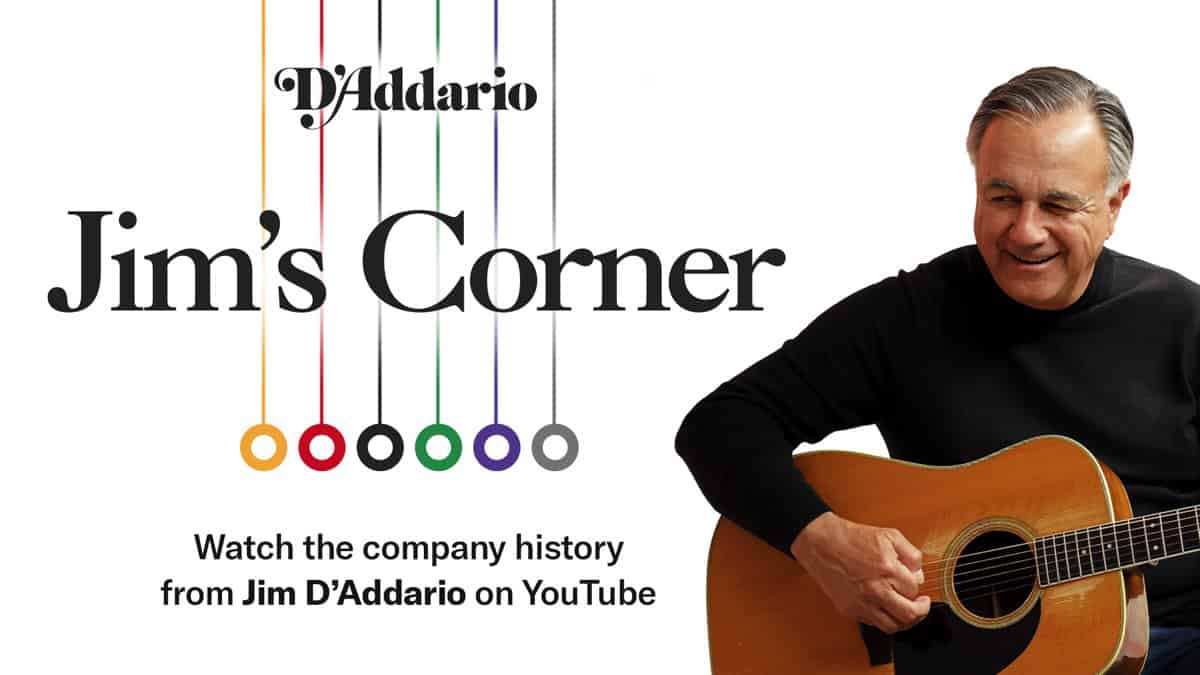
Behind the Strings – Jim’s Corner…
D’Addario & Co. proudly announces the launch of “Jim’s Corner,” a captivating new YouTube series telling the 400-year-old story of the D’Addario family creating the world’s largest music accessories company. This series features Jim D’Addario, Founder and Director of Innovation at D’Addario and Co., sharing his family’s remarkable journey from 17th century Italy to a 21st century global enterprise.
In the first four episodes now available, Jim D’Addario takes viewers back to the beginning, making strings from animal guts and knotting ukulele wire as a family around the television. Countless generations carried the passion forward until the 1970s when the company made it official and never looked back. Jim recounts the creation of strings that inspired legendary riffs, including one by The Who, the launch of Darco strings, the merger with Martin Guitars and the company’s humble beginnings with his wife, Janet and brother, John. Jim D’Addario’s firsthand accounts provide an intimate and personal perspective on the milestones and challenges that shaped D’Addario into the revered brand it is today.
Episode Highlights:
- Episode 1: The Early Days in Italy and the Move to America
- Episode 2: Inspiring Iconic Riffs and Legendary Partnerships
- Episode 3: Launching Darco Strings and Merging with Martin Guitars
- Episode 4: Building the D’Addario and Co. Legacy
Watch & Subscribe Now:
Join us in celebrating this incredible legacy by watching the first four episodes of “Jim’s Corner” on YouTube. New episodes will drop every month so please subscribe to our channel to ensure you don’t miss any future episodes and exclusive content from D’Addario & Co.: www.youtube.com/@daddarioandco
Gear News
Gear News: Aguilar Amplification Unveils Limited Edition NYC Gold Skyline Tone Hammer Preamp
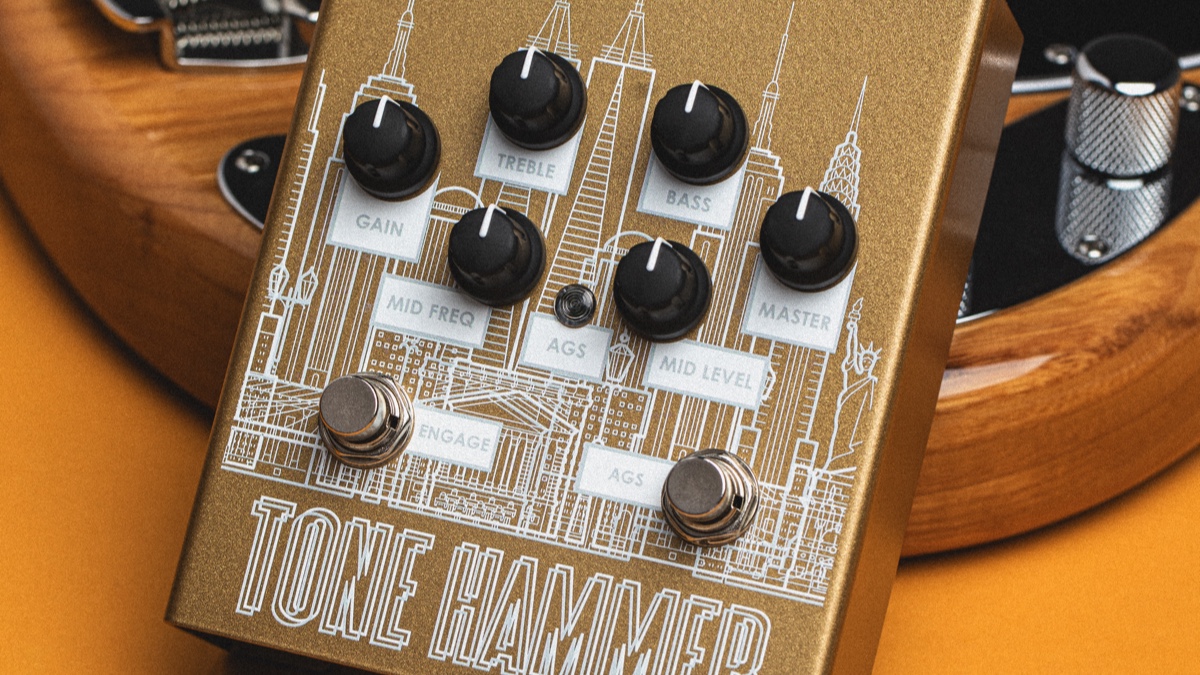
Aguilar Amplification announces the release of the Limited Edition NYC Gold Skyline Tone Hammer Preamp pedal. Hand serialized 1-100, this exclusive edition celebrates Aguilar’s deep roots in New York City with a tribute to its iconic landmarks and vibrant spirit.
Born in the heart of NYC and raised on the road, the Tone Hammer Preamp DI has been an indispensable tool for bassists seeking inspiring tone and versatility. The new Limited Edition Gold NYC builds on this legacy with striking custom graphics encapsulating the essence of New York City. Featuring iconic landmarks from the Statue of Liberty to the Empire State Building, this pedal is not just a tool, but a piece of art embodying the soul of the city. Each unit features a sharp platinum silkscreen over a stunning matte gold sparkle finish, that is as visually captivating as it is sonically powerful.
The Tone Hammer is an essential preamp/direct box for every bassist’s toolbox. The Tone Hammer features fully sweepable midrange frequencies in addition to bass and treble controls. With the Tone Hammer’s pristine D.I. players are set for either studio or stage. To give this tone shaping unit the ultimate flexibility we introduce our proprietary Adaptive Gain Shaping circuitry (AGS). AGS allows the player to kick in an additional gain structure and EQ with the “stomp” of a button. You can go from modern slap sounds to vintage or overdriven. 18-volt operation gives the Tone Hammer plenty of headroom to reproduce the most dynamic playing styles. Separate gain and master controls allow players to dial in just the right gain structure for any instrument.
Aguilar Amplification’s Jordan Cortese adds, “With only 100 hand-numbered units available, this third iteration of our NYC edition Tone Hammer is a collector’s dream. “It’s a homage to our city’s monumental influence on music and culture and celebrates the craftsmanship and the story of Aguilar”.
Street price: $299.99 For more information, please visit www.aguilaramp.com






















